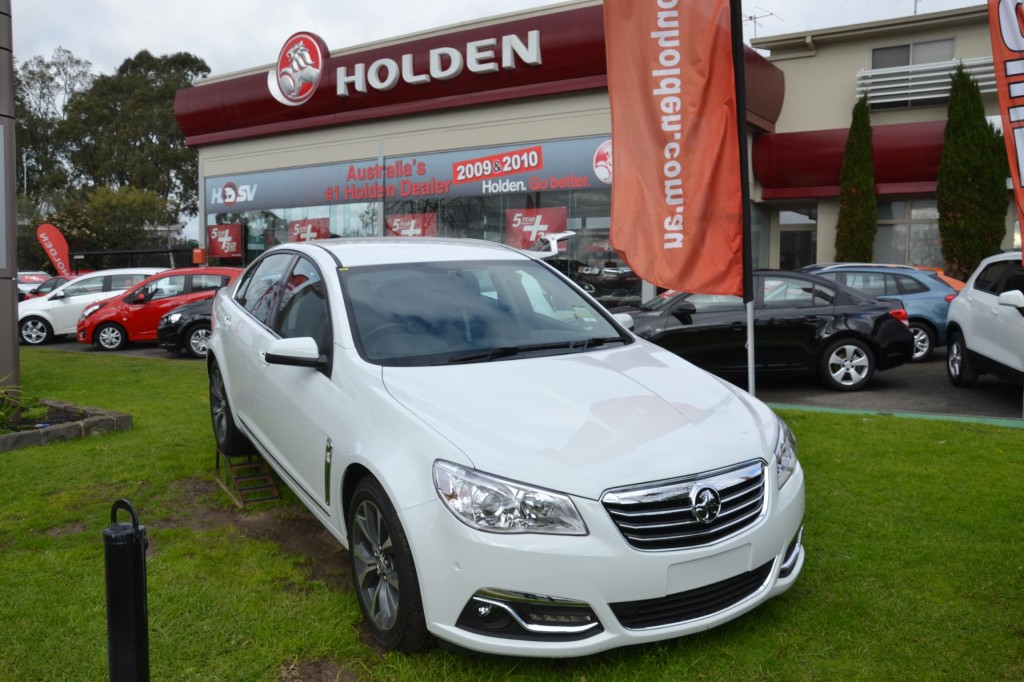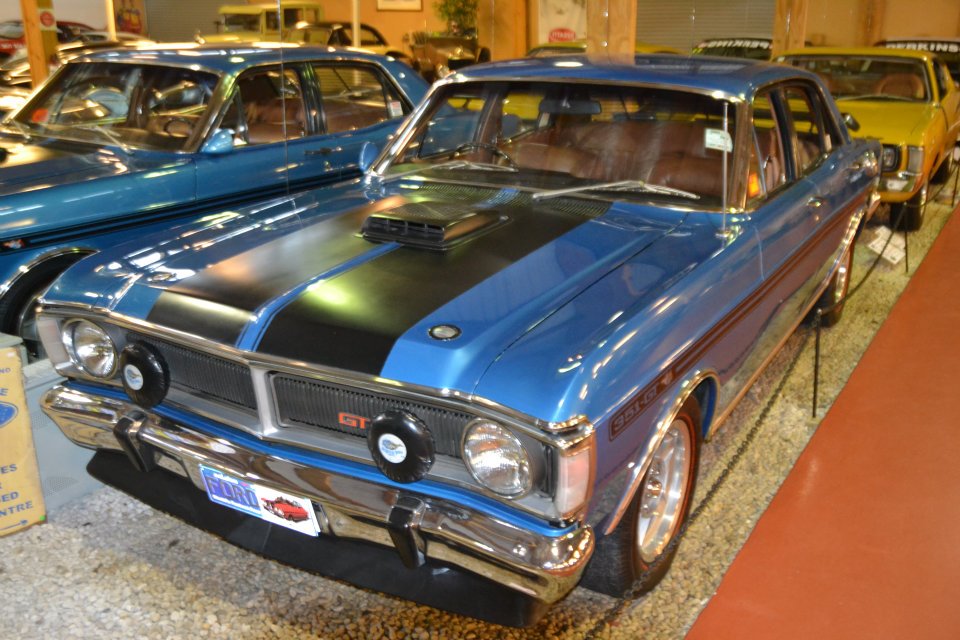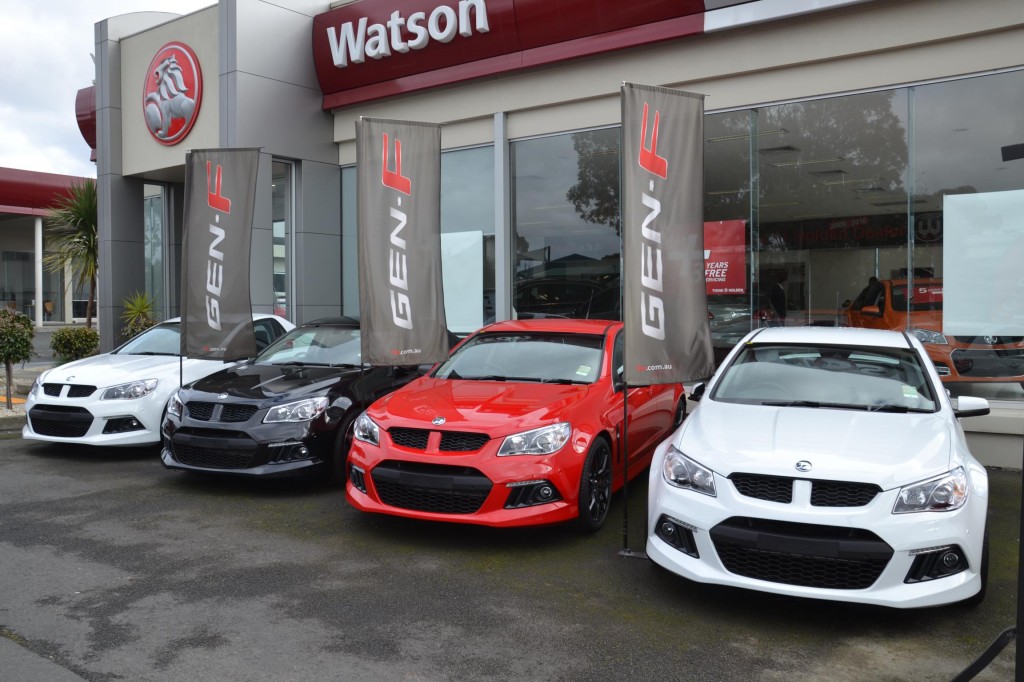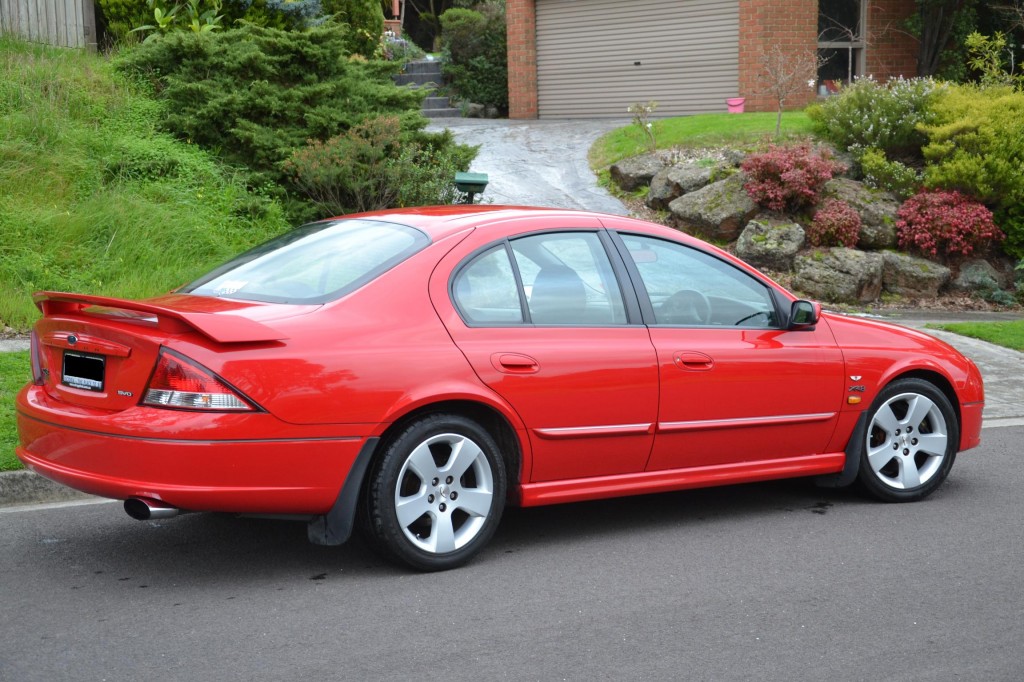Learn English while learning about daily life in Australia, with Rob McCormack
Podcast Number 45 – Australian Made Cars
Hi,
Australia has designed and made cars for around 65 years, but not for too much longer. That’s a pity, because I have owned and enjoyed Australian made cars for a long time. Australians love their cars and are passionate about them. For example, just for Holden cars alone, the main Australian brand, there are 129 car clubs in Australia. We really are crazy about cars. In this podcast, I would like to tell you a little about Australian made cars.
While Australian made cars have been popular in Australia in the past, their popularity is diminishing. Sales numbers have been going down and down. This has had a very bad effect on the local car makers. Things are so bad that, by the end of 2017, all car makers in Australia will have stopped making cars here. All cars bought in Australia from that time on will be imported.
Things were different in the 1960s, when I first became a fan of cars and Australian cars in particular. I can remember back then that you could buy an Australian made car from one of six local car makers. They were British Motor Corporation of Australia, Chrysler, Ford, General Motors Holden, Renault and Toyota. Some of these companies made cars which were designed in other countries, however there were 3 car makers which designed as well as built cars in Australia. These car makers were ‘the big three’ as we called them. They were General Motors Holden, Ford and Chrysler. All of these companies had links back to their parent companies in America, but in every other sense they were Australian. The cars they made were powered by six cylinder engines with rear wheel drive. These cars seemed to be just what Australian buyers wanted. They were large cars compared to others cars of the day. They had four doors and a big boot for carrying things. The engines had good power and the cars were strongly built in order to handle tough Australian conditions. They were also well suited to the needs of Australian families. Australians travel long distances, especially those living in country areas. Cars had to be able to travel with ease for long periods, over roads that sometimes were not sealed and often towing a caravan.
Australians back then loved to go on holidays in a caravan, and they still do today. My parents had one and I can remember going on summer holidays to a popular seaside town called Augusta in the south west of Western Australia. We would swim all day and also go fishing. An Australian built car was just perfect for that sort of activity. The Ford Falcon, the Holden or the Chrysler Valiant was the perfect car to tow your caravan and carry all the family’s things, as well as the family. These cars were not complicated and were quite robust. If something broke, it was easy to find someone who could fix it, and parts were not that expensive. There is no doubt that these cars were not as refined or advanced as cars from the European car makers like Mercedes. They were also not as fuel efficient but that didn’t seem to matter in the 1960s. Australians bought these cars in their many thousands.
In the late 1960s and 1970s, some of these cars also had the option of a V8 engine. That was how the classic Australian muscle car was born. The most powerful sports sedans of that period were the Ford Falcon GTHO, the Holden Monaro GTS 350 and the Chrysler Valiant Charger RT.
These cars became the classic Australian high performance cars which today bring such high prices from collectors. Car enthusiasts in Australia love these cars. That’s why, even in 2014, you could still buy new Australian built high performance cars – such as the Ford Performance Vehicles GT F with a 351 kilowatts V8 engine and the Holden Special Vehicles GTS with a 430 kilowatts V8 engine. Unhappily, they too will soon be phased out.
Since the 1970s, car manufacturing in Australia has undergone major change. Of the 6 companies making cars back then, only 3 remain making cars in Australia today – Ford, General Motors Holden and Toyota. In 1970, there were 450,000 vehicles made in Australia. Production remained reasonably steady at around 300,000 cars per year up until 2008. But sales had already started to drop. Australians were wanting more fuel efficient cars, and also smaller cars. The Holden Commodore and the Ford Falcon, once the most popular car models in Australia, were not selling well enough. The car makers were finding it increasingly difficult to make a profit. Since around 2003, the Australian government has provided around $4.2 billion in grants direct to the car makers in Australia, or about $420 million per year. But even with this money, it seems that the car makers are no longer making a profit making cars in Australia. The fact is, Australians are now wanting different cars to those being built in Australia. The cost of labour is high in Australia and our market is too small. Unless the Australian car makers can also export their cars, they are not be able to make a profit. The high Australian dollar has not helped, making our cars too expensive in other countries. So that is how it has happened.
I bought a new Ford Falcon in 2002 and I still have it. It has a V8 engine with a 5 speed manual gearbox. It’s quite old now but I have kept it in excellent condition and I love it.
Every time I drive it, I think of how great Australian cars have been over the years. In 2016, the last Ford Falcon will be built, and in 2017, the last Holden Commodore. It will be a sad day, but the world is changing and Australia must change with it.
If you have a question or a comment to make, please leave it in the comments box at the bottom of this page. Or, you can send me an email at rob@slowenglish.info . I would love to hear from you. Tell me where you live, a little bit about yourself and what you think of my Slow English podcast. I will write back to you, in English of course. If you would like to take a short quiz to see if you have understood this podcast, you will also find it on my website. Goodbye until next time.
Rob
Podcast 45 Quiz - Did you understand the podcast?
You can take the quiz as many times as you like.
Vocabulary
boot = the back part of a car which carries things. Called a trunk in America
brand = a name given to a product or service. For example, Coca Cola.
caravan = something you pull behind your car. You can sleep in it. Like a house on wheels
classic = something from the past which is very, very good
collector = someone who collects things for fun, for example, stamps or cars
companies = groups of people who join together, people work for them
compared = to see how something is different to something else
complicated = difficult to understand
conditions = the places and weather which cars must be able to go through
crazy about = to really like something a lot
cylinder = part of an engine, like a tube. An engine has one or more cylinders
designed = to plan something, including how it will look and operate
diminishing = getting less
disappear = when things are no longer there to be seen
engines = devices which make a vehicle move, they make power
enthusiasts = people who love an activity, for example football fans
expensive = costs a lot
export = when you send your products overseas to be sold
fuel efficient = doesn’t use much petrol or gasoline
grants = when money is given to someone or to a company
handle = to be able to do something
high performance cars = cars that go fast
imported = bought in another country and brought into your country
in every other sense = all other ways of thinking about something
kilowatts = a way to measure how much power a car has, for example, kilowatts, horsepower
labour = the people who work for a company
links = have things in common, or are related
manufacturing = to make something
market = the people who buy your product
muscle car = a car with a lot of power
option = something you can choose to have
parent companies = where one companies is started by another company
passionate = when you feel strongly about something, or like it a lot
period = a time, for example 3 hours
phased out = removed, no longer available
pity = when something is unfortunate or something you wish didn’t happen
powered = when something is given energy by an engine
production = when things are made
profit = when you make money from doing something
rear wheel drive = when the power in a car is through the back two wheels
reasonably = when something is not too large and not too small
refined = very well made, of high quality
remained = left behind, still there
robust = strong, will not break easily
sales = when things are sold, bought by someone
sealed = when a road has a hard top, of concrete or bitumen
seaside = next to the sea
tough = when something is hard or difficult
tow = to pull something behind a vehicle such as a car
Western Australia = a state of Australia, on the western side





June 3, 2024 at 7:57 pm
Hi Rob
Hope everything is good with you
I’ve just listened to this podcast again.
Thanks for the good oil.
I’m considering starting in Aus with Toyota (Yaris or Corolla).
Do you have your Falcon 2002 yet? Or do you own another car?
June 3, 2024 at 8:27 pm
Hi Masoud,
Many thanks for your comment. Yes, I still have my Falcon, which I still enjoy driving. It’s a great Aussie built car. Good luck with your car purchase. A Yaris or a Corolla would be an excellent choice.
Cheers,
Rob
October 3, 2021 at 7:25 pm
Hi Rob. The first car my son bought when he first came to Australia was also a Holden. Which is cost-effective and easy to maintenance indeed. I like the logo of Holden, which is probably one of the symbol of Australia cars. Seeing fewer Holden cars on the road, even I, who was not born and raised in Australia, felt a little sorry. After all, the auto industry is a direct reflection of the overall strength of a country’s industry. But of course, Australia has its own advantages, which do not necessarily have to be reflected in the automotive industry, I think.
Thanks for your wonderful sharing.
Dep
October 3, 2021 at 11:35 pm
Hi Dep. Many thanks for your comment. Yes, Holden cars were an integral part of Australian life for so long. They were culturally important in Australia so losing the brand was a real blow. I agree that the auto industry here was an industrial capability which we will regret losing. The pandemic has shown us that we need to be able to supply our own needs, including in a manufacturing sense. I hope governments of the future can remedy this, perhaps even in car making.
Cheers
Rob.
April 22, 2021 at 2:27 pm
thanks alot of information
April 22, 2021 at 5:54 pm
Hi Reyhan,
Thanks for your feedback.
Have a great day.
Rob
July 20, 2014 at 5:30 pm
Hi, Rob,
I have a question about Question 5.
The question is “True or False? – Australian cars in the 1960s were strongly built because they had six cylinder engines.” and the correct answer is “False”.
But according the article “The cars they made were powered by six cylinder engines with rear wheel drive. … The engines had good power and the cars were strongly built in order to handle tough Australian conditions. So my rationale is because the engines had good power so the cars were strongly built in order to handle tough Australian conditions, am I right? If my rational is correct the answer should be “True”. Or this sentence means the engines had good power and the cars were strongly built in order to handle tough Australian conditions. So the cars were strongly built because to handle tough Australian conditions, in this case the answer should be “Wrong”, which one is correct?
Yours sincerely,
Paul
July 20, 2014 at 5:54 pm
Hi Paul,
You ask really good questions. I agree that my question is a little confusing. The correct answer is ‘False’. Perhaps I should have asked the question like this – ‘True or False? – Because Australian cars in the 1960s had six cylinder engines, they were strongly built.’ I think then you would have correctly answered that this is ‘false’. It wasn’t the 6 cylinder engines which required a strongly built car, it was the tough Australian conditions. As you correctly point out from the article, my story says that Australians cars were built strongly in order to handle the tough Australian conditions.
Interestingly, the first Ford Falcon, 1960, proved not to be strong enough in the body and suspension to handle the tough conditions. A lot of these cars had failures. So Ford had to build them stronger, which they did. The models after that (1962 on) were much tougher and handled the Australia conditions well.
Thanks again your interesting question. Your English is very advanced and you are doing well. Keep up the good work.
Cheers,
Rob
July 19, 2014 at 7:48 pm
What a great post Rob. You have summed up the plight of our car makers in a way that others will be able to relate to easily. It will be a sad day when those great cars are not longer made and produced here. Mind you, I look forward to the odd ride in that muscle car of yours which will keep the memories alive.
July 20, 2014 at 6:55 am
Thanks Ray. It is sad that our great Aussie cars will soon no longer be made. But my red XR8 keeps the memories fresh for me. You’re always welcome to a ride.
Cheers,
Rob